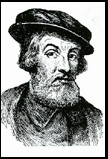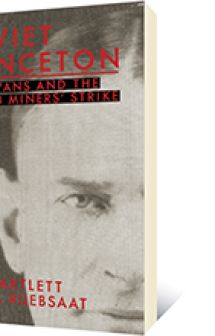“…wafers of warm bliss give
moments of ecstatic oblivion to all who taste
but this pleasure has no history …”from a poem by T. Wolfwood
Carol Off, a Canadian journalist, sets off into the jungle of West Africa in search of the truth about Cote d’Ivoire’s most precious commodity, cocoa. She reached a poor remote village where the tired and weary people have no school, no clinic, no electricity or phones. She says they grow “the food of the gods”, but live a long way from paradise. They grow cocoa, sell it to buyers, but have no concept of what happens to it or where it goes when the raw product leaves their community. When chocolate bars are explained to the children of the village they do not grasp the idea that children here eat chocolate bars frequently.
precious commodity, cocoa. She reached a poor remote village where the tired and weary people have no school, no clinic, no electricity or phones. She says they grow “the food of the gods”, but live a long way from paradise. They grow cocoa, sell it to buyers, but have no concept of what happens to it or where it goes when the raw product leaves their community. When chocolate bars are explained to the children of the village they do not grasp the idea that children here eat chocolate bars frequently.
She writes, “…the children who struggle to produce the small delights of life in the world I come from have never known such pleasure, and most likely, never will. It’s a measure of the separation in our worlds, a distance now so staggeringly vast…the distance between the hand that picks the cocoa and the hand that reaches for the chocolate bar.” The misery and slavery – yes, slavery – of today’s cocoa producers, including thousands of children, is the present result of centuries of injustice. Off describes in Bitter Chocolate the horrific history of the production of cocoa and its sweet offspring, chocolate, that our privileged world loves so much.
When Cortes invaded what is now Mexico he found the elite of Montezuma court and army drinking a miraculous liquid that nourished and strengthened leaders and soldiers. He took it cocoa, a commodity so precious that it was used in the conquered lands as currency, to Spain from where is spread in popularity across Europe. Thus began our society’s participation in the more than 500 years of exploitation, colonialism and slavery that continues to this day so that millions of the privileged can enjoy chocolate in all its forms. From the plantations of indigenous people the trade expanded so that slaves were imported from Africa to the new colonies to produce both sugar and cocoa. Meanwhile improvements and additives made the popularity of the new drink spread throughout Europe – from the royalty down to any who could afford it. Cocoa became a beverage imbued with health, sexual and sensuous pleasures. By the 1700s Van Houten, a Dutch inventor, had created cocoa powder and the Fry enterprise in England invented the modern chocolate bar.
The Fry’s were Quakers and soon other Quakers, Cadbury’s and Rowntree’s, were in the chocolate business (a nice alternative to the arms trade) and they all had sense of social responsibility to their workers. They pioneered social benefits, housing and good working conditions for their English employees (as did Hershey later in the USA); but their morality did not extend to the workers who produced the cocoa who “had hardly any control over their destinies and lived and died as slaves”. By then cocoa production had been established in Africa with a ready source of labour in European colonies. Journalists began to track the story, a task which continues to the present as chocolate grown with slave and child labour is still promoted as a symbol of love, luxury, religion and even health. New empires were created on cocoa by Hershey, Nestles and Mars. It just keeps growing (and so do profits) to fill our endless desire for this pleasure.
It seem like such a cosy and warm feeling thing to do – give a lover a box of chocolates, make a cup of cocoa for a sick a child, take chocolate chip cookies to a party. But as Susan Hawthorne says in Wild Politics, Disconnection is critical for a system based on profit. And profit is what contemporary trade and food production is all about. We enjoy these small luxuries (and expensive ones, like diamonds) without any connection to the workers who make our pleasure possible. Off makes the connections for us without mercy for our sensitivities, driven by her experiences in West Africa where she followed other journalists who were murdered because they sought the truth. Organizations dedicated to human rights and relief also feel the pressure, many pack up and leave countries when their work and workers are threatened.
Today the Ivory Coast still produces more cocoa than any other country but no nation controls the production or price of the raw cocoa it exports. Slave child labour is still used, no supposed agreements and commitments to end this practice has worked, because there is not proper monitoring and as Off learned, trying to reveal the truth is dangerous. We are talking big business here; marketing is controlled by the notorious Cargill and the lesser known Archer Daniels Midland – both secretive and powerful in many agricultural commodities. Cocoa, like diamonds, is a useful currency for the arms that the minority world industry and governments are happy to peddle in the majority world to dictators who have no desire to upset this trade by creating justice for peasants and labourers.
Several issues become very clear as one reads Bitter Chocolate; issues that stay with the reader, issues firmly based in the documentation Off provides. First of all, we in the minority world seem to believe we have a divine right to cheap food and other commodities, but especially food. We rarely connect the price of food to the conditions of farms, including the rapidly disappearing Canadian family farm.
Another issue is the much touted “free trade” we are supposed to enjoy.
The powerful nations, corporations and institutions like the IMF, which inflict trade liberalization on small, poor, countries that produce raw materials, all support the subsidies and protection that big farmers in the USA and European Union enjoy (and then there is British Columbia, a global exporter of raw logs and always being manipulated by USA softwood lumber interests).
This book does a good job of explaining the advantages and problems of Fair Trade using a project in Belize as an example. Here Mayan farmers have gone back to traditional varieties of cocoa trees that do not need chemical inputs. The farmers get a guaranteed price for their production; they and their communities prosper. In order to assure European consumers of the trustworthiness of fair trade, the cost and administrative work is very high for farmers. A Canadian manager tells us that the bureaucratic demands will be difficult to sustain, these costs present real problems, particularly for small producers who want to have the security of fair trade. The need of veracity and the limited capacity of small farmers have to be addressed and reconciled if we want to support community based Fair Trade.
One company that Off does not mention is Camino, the cocoa brand that I use; it is widely available in supermarkets as well as specialty shops. Based in Ontario, Camino products come from La Siembra growers in the Dominican Republic. Since 1999, La Siembra has increased its sales as the first organization to import, manufacture and distribute fair trade certified organic cocoa products in North America. La Siembra’s Cocoa Camino products include cocoa, chocolate bars and chocolate chips. See: www.lasiembra.com. It is a sobering incentive to buy Fair Trade when we know that the producer of coca gets barely 5% of the profit of this finished retail product.
So it is possible to enjoy cocoa products that mean better lives, health and working environment for whole communities. So far only a few thousands of the 14 million cocoa works worldwide enjoy this opportunity, in Belize and Dominican Republic as well as those on cooperatives in Ghana, but the Fair Trade of cocoa products is growing rapidly and cocoa sales are approaching those of Fair trade coffee.
Fair Trade is the immediate answer for privileged consumers but we also need to work on the dismantling of unfair trade regulations and the appalling power of corporate buyers who can make or break producers, whole countries, at will. We have to respect food and be willing to pay those who produce it. Bitter Chocolate is a real eye–opener and expose of a filthy oppressive trade system. I recommend we follow up Off’s references and incorporate the issues she illustrates with action.
A good book to read as a companion to this book is The Bittersweet World of Chocolate by Troth Wells & Nikki van der Gaag of the New Internationalist Publications. It has wonderful recipes interspersed with interesting information about cocoa and Fair trade as well as references and action data.
Canadians involved in the Co–op movement can initiate action here like this: the UK Co–operative 2,400 supermarket chain sources all cocoa for its own brand of chocolate bars from the Ghanaian Kuapa Kokoo farmers.
The words and faces of cocoa producers that benefit from Fair Trade will melt your heart faster than chocolate in your mouth and will convince anyone to use Fair Trade.



 Follow
Follow






















